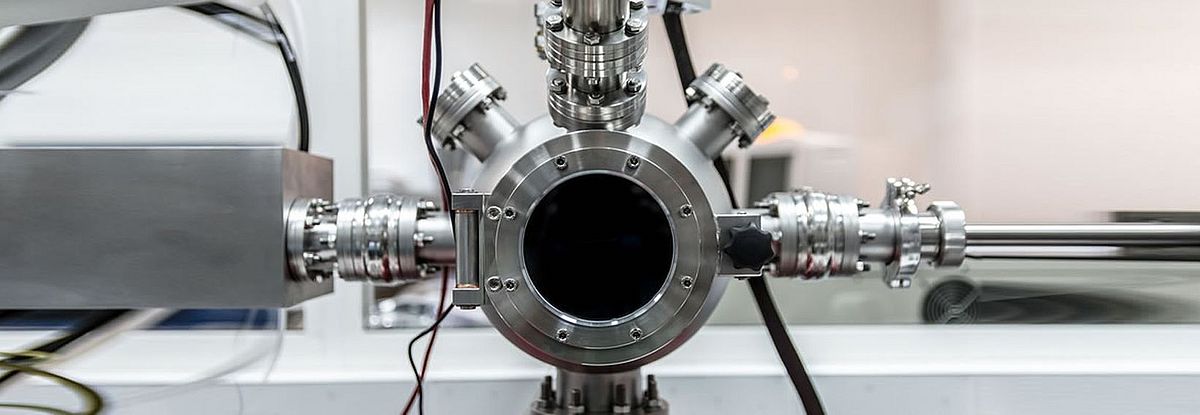
Your contact for PTFE-enveloped gaskets
Flange connections with a high level of chemical attack
PTFE-enveloped gaskets
In flange connections where there are high levels of chemical attack, PTFE flat gaskets are used. Due to the cold flow affinity of unfilled PTFE, use is mainly made of PTFE composites and PTFE-enveloped gaskets which have increased resistance to stress relaxation. Because of their high chemical resistance and outstanding sealing properties, PTFE-enveloped gaskets have proven
excellent when used at fluctuating pressures and temperatures ranging from -195 °C to +250 °C. Glass tubes, metalenveloped glass tubes and glass equipment from laboratory or pilot installations can be connected up as easily as enamelled, coated or lined pipes and equipment in large plants.
PTFE-enveloped gaskets are particularly useful with aggressive chemicals in the chemical industry, due to their high resistant strength. PTFE is also physiologically harmless, and so can be used in the food and pharmaceutical sectors. Apart from their high resistance to chemicals, PTFE is also extremely anti-adhesive. This non-stick effect means that no material will adhere to the surface of the PTFE. PTFE-enveloped gaskets consist of a stable gasket insert and a PTFE envelope.
Only high-quality, non-porous PTFE is used for the envelope, so as to protect the insert against chemical attack. The PTFE envelopes are open onto the outer or inner diameter, or encase the entire insert, depending on what is required. The envelope is 0.5 mm thick and therefore very stable. Lathed envelopes can be produced with an internal diameter 2 to 4 mm thicker to provide greater diffusion sealing.
| Profile | cross-section | Description | |
|---|---|---|---|
| PF2 | Profile PF2 with a envelope that can be supplied as a lathed or shaped envelope, depending on the size of the gasket | Insert: Soft material flat gaskets The insert is made of a graphite laminate or fibre sealing material. With a graphite laminate insert, the gasket is also suitable for use with plastic or GRP flanges due to its greater conformity and softness. | |
| PF3 | Profile PF3 with a envelope with a reinforced internal diameter. | ||
| PF18 | Profile PF18 with a envelope that is punctured without cutting. | ||
| PF21 | Profile PF21 with a lathed envelope. | ||
| PWA2 | Profile PWA2: With a corrugated ring, thin metal sheet layer on both sides and a layer of RivaTherm Super. With the use of a sheet metal insert, the corrugated ring is not filled out with soft material, so that the spring effect of the corrugated carrier is less impeded. | Insert: Corrugated gaskets | |
| PW4 | Profile PW4: Here the insert consists of a corrugated ring, with a layer of RivaTherm Super on both sides. | ||
| PW5 | Profile PW5: Like PW4, but with a PTFE envelope reinforced by approx. 2.5 mm on the internal diameter, to improve diffusion sealing. | ||
| PW21 | Profile PW21: Lathed PTFE envelope, reinforced internally with a corrugated ring insert. Up to DN 200, the corrugated ring is concentrie at the inner edge | ||
| PW1A-3 | Profile PW1A-3: Corrugated gasket with parallel concentrie centre ring, an abbreviated PTFE envelope and graphite layer on both sides to provide a fire-safe seal | ||
| PF7 | Profile PF7, PF9 and PF15 with an even basic profile | PTFE-enveloped gasket with a grooved gasket insert of metal for even sealing surfaces, ceramic or glass is used for higher pressures. The sealing surfaces must be surface-ground for ceramic and glass, so that no stress peaks arise that could cause the material to be destroyed. | |
| PF9 | |||
| PF15 | |||
| PF27 | Profile PF27, PF29 and PF25 with a convex basic profile | ||
| PF29 | |||
| PF25 | |||
| Profile | Graphite laminate 2mm | Fiber 2mm | PTFE, RS & 1.4571 | PTFE & 1.4571 | PTFE & 1.4541 | |||
|---|---|---|---|---|---|---|---|---|
| PF2, PF3, PF18 & PF21 | Recommended max. roughness of the flange surfaces | µm | von | 50 | 50 | |||
| bis | 100 | 100 | ||||||
| Surface pressure limits for 20°C | N/mm² | σv | 20 | 15 | ||||
| σϑ | 90 | 60 | ||||||
| Surface pressure limits for 300°C | N/mm²ơ | σv | 25 | |||||
| σϑ | 80 | |||||||
| Temperaturbereich | °C | von | 195 | -100 | ||||
| bis | 250 | 150 | ||||||
| PW4 & PW5 | Recommended max. roughness of the flange surfaces | µm | von | 25 | ||||
| bis | 50 | |||||||
| Surface pressure limits for 20°C | N/mm² | σv | 25 | |||||
| σϑ | 80 | |||||||
| Surface pressure limits for 300°C | N/mm²ơ | σv | 30 | |||||
| σϑ | 60 | |||||||
| PW21 | Recommended max. roughness of the flange surfaces | µm | von | 25 | ||||
| bis | 50 | |||||||
| Surface pressure limits for 20°C | N/mm² | σv | 25 | |||||
| σϑ | 80 | |||||||
| Surface pressure limits for 300°C | N/mm²ơ | σv | 30 | |||||
| σϑ | 60 | |||||||
| PF7, PF9 & PF15 PF27, PF29 & PF25 | Recommended max. roughness of the flange surfaces | µm | von | 25 | ||||
| bis | 50 | |||||||
| Surface pressure limits for 20°C | N/mm² | σv | 15 | |||||
| σϑ | 500 | |||||||
| Surface pressure limits for 300°C | N/mm²ơ | σv | 17 | |||||
| σϑ | 450 |